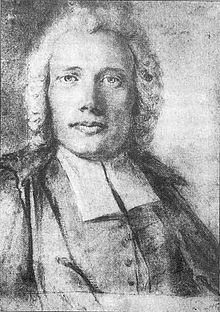

Pehr Osbeck (1723 – 23 December 1805) was a Swedish explorer, naturalist and an apostle of Carl Linnaeus. He was born in the parish of Hålanda on Västergötland and studied at Uppsala with Carolus Linnaeus.


Pehr Osbeck (1723 – 23 December 1805) was a Swedish explorer, naturalist and an apostle of Carl Linnaeus. He was born in the parish of Hålanda on Västergötland and studied at Uppsala with Carolus Linnaeus.
In 1750–1752 he travelled as chaplain on the ship Prins Carl to Asia where he spent four months studying the flora, fauna, and people of the Canton region of China. He returned home just in time to contribute more than 600 species of plant to Linnaeus' Species Plantarum, published in 1753.
In 1757 he published the journal of his voyage to China, Dagbok öfwer en ostindisk Resa åren 1750, 1751, 1752, which was translated into German in 1762 and English [1] in 1771. In 1758, he was elected a member of the Royal Swedish Academy of Sciences.
He ended his career as the parish priest of Våxtorp and Hasslöv in Halland, where he died in 1805.
His large collections are preserved in Sweden and the UK. He is commemorated by the genus Osbeckia L. of plants in the family Melastomataceae.

Carl Linnaeus, also known after ennoblement in 1761 as Carl von Linné, was a Swedish biologist and physician who formalised binomial nomenclature, the modern system of naming organisms. He is known as the "father of modern taxonomy". Many of his writings were in Latin; his name is rendered in Latin as Carolus Linnæus and, after his 1761 ennoblement, as Carolus a Linné.

The long-tailed shrike or rufous-backed shrike is a member of the bird family Laniidae, the shrikes. They are found widely distributed across Asia and there are variations in plumage across the range. The species ranges across much of Asia, both on the mainland and the eastern archipelagos. The eastern or Himalayan subspecies, L. s. tricolor, is sometimes called the black-headed shrike. Although there are considerable differences in plumage among the subspecies, they all have a long and narrow black tail, have a black mask and forehead, rufous rump and flanks and a small white patch on the shoulder. It is considered to form a superspecies with the grey-backed shrike which breeds on the Tibetan Plateau.
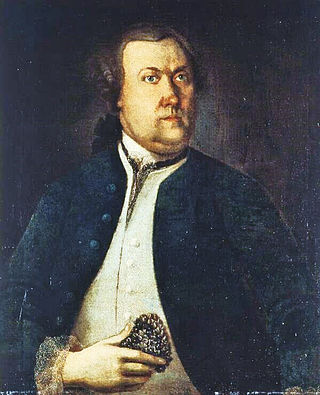
Pehr Kalm, also known as Peter Kalm, was a Swedish explorer, botanist, naturalist, and agricultural economist. He was one of the most important apostles of Carl Linnaeus.
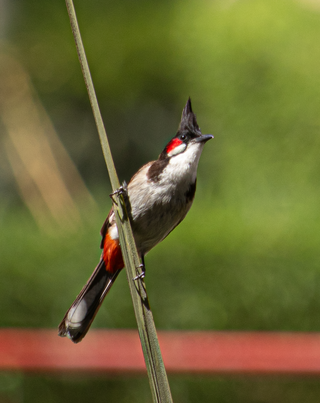
The red-whiskered bulbul, or crested bulbul, is a passerine bird native to Asia. It is a member of the bulbul family. It is a resident frugivore found mainly in tropical Asia. It has been introduced in many tropical areas of the world where populations have established themselves. It has a loud three or four note call, feeds on fruits and small insects and perches conspicuously on trees. It is common in hill forests and urban gardens.

Punsch is a type of liqueur popular in Sweden and Finland. It is most frequently called Swedish Punsch, and while historical variations have also been called Militär Punsch, Arrack Pun(s)ch, and Caloric Pun(s)ch, punsch should not be confused with the English term "punch". It is made by the mixing of spirits with arrak tea, sugar, and water, and was first brought to Sweden from Java in 1733. The spirit arrack is the base ingredient in most punsches, also imported into Europe by the Dutch from their colony in Batavia, Dutch East Indies. Punsch usually has 25% alcohol by volume (ABV) and 30% sugar.

Carl Peter Thunberg, also known as Karl Peter von Thunberg, Carl Pehr Thunberg, or Carl Per Thunberg, was a Swedish naturalist and an "apostle" of Carl Linnaeus. After studying under Linnaeus at Uppsala University, he spent seven years travelling in southern Italy and Asia, collecting and describing people and animals new to European science, and observing local cultures. He has been called "the father of South African botany", "pioneer of Occidental Medicine in Japan", and the "Japanese Linnaeus".
Fredrik Hasselquist was a Swedish traveller and naturalist.

Peter Forsskål, sometimes spelled Pehr Forsskål, Peter Forskaol, Petrus Forskål or Pehr Forsskåhl was a Swedish explorer, orientalist, naturalist, and an apostle of Carl Linnaeus.

Adam Afzelius was a Swedish botanist and an apostle of Carl Linnaeus. Afzelius was born at Larv in Västergötland in 1750. He was appointed teacher of oriental languages at Uppsala University in 1777, and in 1785 demonstrator of botany. In 1793 he was elected a member of the Royal Swedish Academy of Sciences. In 1800, Adam Afzelius became member of the German Academy of Sciences Leopoldina.

Sir John Hill was an English composer, actor, author and botanist. He contributed to contemporary periodicals and engaged in literary battles with poets, playwrights and scientists. He is remembered for his illustrated botanical compendium The Vegetable System, one of the first works to use the nomenclature of Carl Linnaeus. In recognition of his efforts, he was created a knight of the Order of Vasa in 1774 by Gustav III of Sweden and thereafter called himself Sir John Hill.
Pehr Löfling was a Swedish botanist and an apostle of Carl Linnaeus.
Johan Peter Falk was a Swedish botanist and an apostle of Carl Linnaeus. His first name is sometimes spelled "Johann"; his middle name is sometimes spelled "Pehr"; and his surname is sometimes spelled "Falck". The standard author abbreviation Falk is used to indicate this person as the author when citing a botanical name. The genus Falkia is named for him.

The Lord of the Realm was a title of honour introduced by Gustavus III, King of Sweden shortly after his coup and the newly passed constitution. The title was granted by the King and was first received by Frederick William, Prince von Hessenstein on 15 January 1773 by letter. One of the most famous title holders was Hans Axel, Count von Fersen, the supposed lover and confidant of Marie Antoinette, Queen of France.
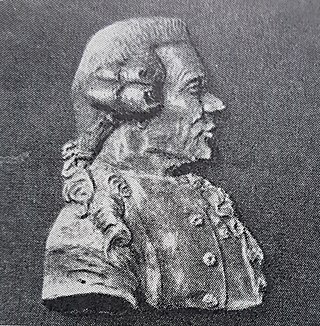
Carl Gustaf Ekeberg was a Swedish physician, chemist and explorer. He made several voyages to the East Indies and China as a sea captain. He brought back reports of the tea tree and wrote a number of books.

Pehr Hilleström was a Swedish artist. He served as a professor and director at the Royal Swedish Academy of Arts.
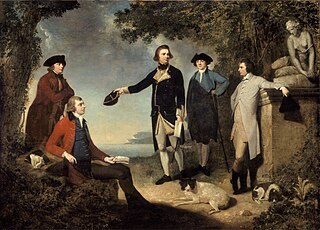
The Apostles of Linnaeus were a group of students who carried out botanical and zoological expeditions throughout the world that were either devised or approved by botanist Carl Linnaeus. The expeditions took place during the latter half of the 18th century and the students were designated 'apostles' by Linnaeus.

The bibliography of Carl Linnaeus includes academic works about botany, zoology, nomenclature and taxonomy written by the Swedish botanist Carl Linnaeus (1707–1778). Linnaeus laid the foundations for the modern scheme of binomial nomenclature and is known as the father of modern taxonomy. His most famous works are Systema Naturae which is considered as the starting point for zoological nomenclature together with Species Plantarum which is internationally accepted as the beginning of modern botanical nomenclature.

Epicharis parasitica, commonly known as yellow mahogany, is a species of tree in the family Meliaceae; it grows primarily in tropical rainforests and is native to Taiwan, parts of Malesia, Papuasia, and northeast Queensland.